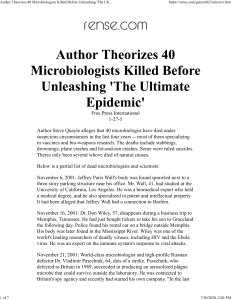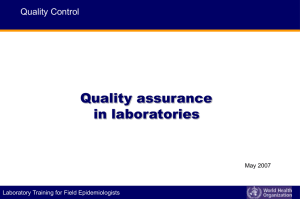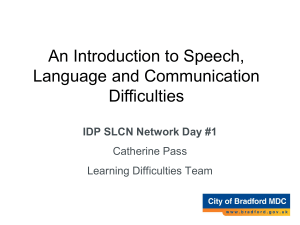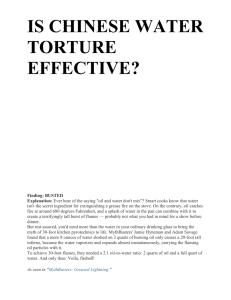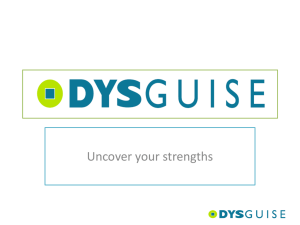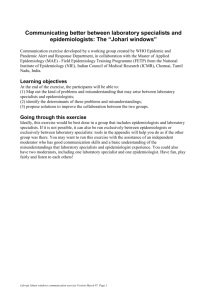Collaboration between epidemiologists and microbiologist
advertisement
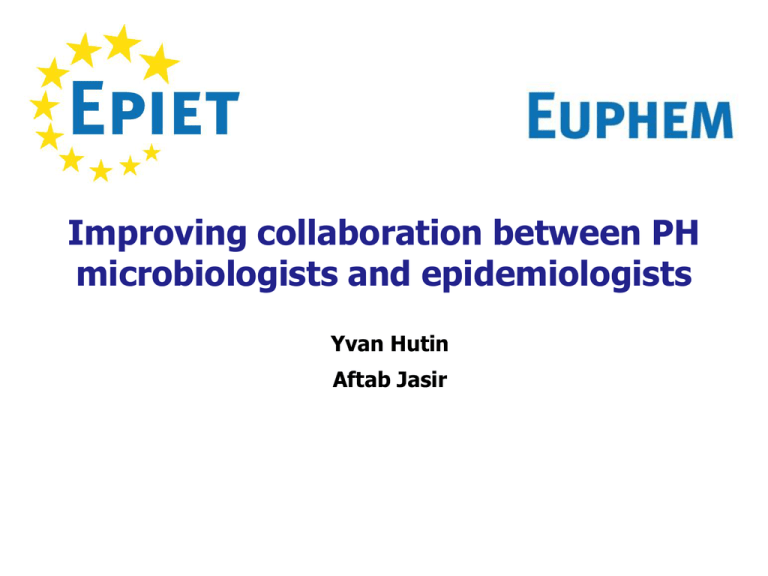
Improving collaboration between PH microbiologists and epidemiologists Yvan Hutin Aftab Jasir Collaboration between public health microbiologists and epidemiologists • Is required for many investigations • May be difficult because of differences in: • • Professional backgrounds • Knowledge and skills and abilities • Working methodologies and habits/attitute • Communication practices May be improved by better communication Objectives of the exercise • Identify what problems arise when PH microbiologists work with epidemiologists • Identify communication difficulties that may cause these problems • Improve communication and trust to resolve problems and collaborate better The 3 steps of the exercise 1. List practical problems that arise when PH microbiologists work with epidemiologists - Microbiologists and epidemiologists sit apart 2. Identify what are the possible causes of the problems 3. Propose solutions involving both parties to the problems identified in Step 1 1. List practical problems that arise when microbiologists work with epidemiologists • Make a list of the practical problems that may arise when: • You work with PH microbiologists (If you are a epidemiologist) • You work with epidemiologists (If you are a PH microbiologist) • Sort these problems according to the options on the form • Focus on practical problems • Keep misunderstanding and attitude issues for later Table to fill for epidemiologists (1 difficulty only per category) Organizational / structural difficulties Lab results come too late Technical difficulties We do not know how to collect and send specimens Communication difficulties The results are incomplete Table to fill for PH microbiologists (1 difficulty only per category) Organizational / structural difficulties Microbiologists not involved in protocol developments Technical difficulties Wrong specimens delivered Communication difficulties Lack of details re: specimens The results are incomplete/ The information given with specimen is insufficient • Make sure the right specimen was sent • Make sure the test requested was the right one • Call the microbiologist to clarify what can be expected • Get trained on communication with epidemiologists • Clarify what test is required in that situation: Will be relevant /useful? • Fill request forms so that microbiologists know what the problem is • Work on the form together • Get skilled at the other´s professional skills How to collect and send specimens? • Obtain protocols from microbiologists • Establish contacts • Work on the protocol together • Teach the staff re: SOPs • Simplify the laboratory protocols • Ask and obtain guidance when needed • Exchange contact information • Make information accessible (e.g., Web) • Establish personal connection Microbiologists not involved in protocol developments • Communicate • Work as a team on protocols Results come too late • Establish communicate channels • Find out when the results will be available • Identify contact persons • Understand that some tests take time / need referral • Clarify why / whether the test is urgent • Find out what network may be activated • Get familiar with the schedule of the laboratory • Have a date with a microbiologist • Visit a lab, get trained • Make attitudes evolve • Speak the same language Outcome of the exercise • Difficulties occur • Responsibilities are shared • Joint efforts do resolve problems

